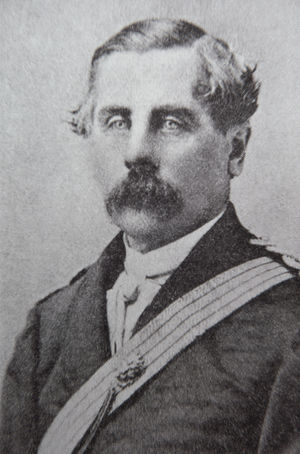How Did Thomas Francis Meagher Really Die
The life of Thomas Francis Meagher was one of honor and service. His death; however, has been shrouded with mystery and shame for the past one hundred-fifty years. On July 1, 1867, Meagher (pronounced Mar) fell from a steamship docked in Fort Benton, Montana into the Missouri river and was never seen again. Theories have been argued as to whether Meagher committed suicide, had a tragic accident, or was murdered. Authors such as Timothy Egan advocate the murder theory while Paul R. Wylie concludes it was an accident due to Meagher’s drunken state.[1]Both theories have merit and substantial arguments as to their validity. Egan, like many before him, posits that Meagher was assassinated by political rivals. Given the circumstances in the region at the time and the men involved, this is not an unreasonable argument. Likewise, Wylie’s position that Meagher was intoxicated and fell into the unforgiving river is also cogent based on his history and penchant for alcohol. The possibility of this strong, Catholic man with a history of perseverance committing suicide is less likely but is not without merit as Meagher’s life was in a rapid state of decline.
Although these theories differ in execution, they share the common thread of intoxication. Witnesses who claimed Meagher was killed said that he had been drinking, thereby making it difficult for him to defend himself. Both the suicide and accident positions claim inebriation was a factor in either a tragic fall or deliberate jump resulting from alcohol induced depression. A new and compelling theory will be presented here that also involves alcohol. Unlike the previous speculations, however; this conjecture is based on the absence of alcohol. It can be argued that Thomas Francis Meagher died from a seizure induced fall into the Missouri River as a result of the effects of Delirium Tremens (DTs) due to his sobriety.
Background on Meagher
Thomas Francis Meagher was born on August 23, 1823 in Waterford, Ireland. At twenty years of age he joined the Young Ireland Movement and participated in the Rebellion of the Young Irelanders of 1848; an uprising and futile attempt at Irish independence. In July of that year, he was arrested and tried, where he was found guilty of treason and sentenced to death. His sentence was commuted to life imprisonment on Van Damien’s Land (present day Tasmania). Meagher made a bold escape in February 1852 and was rescued while floating at sea by an American whaler ship. He was transported to New Haven, Connecticut and from there migrated to New York City.
As he was deemed a fugitive from justice, he was unable to return to England to be with his wife as she died from Typhoid Fever. In 1856, he married the prominent Elizabeth Townsend and became a staunch supporter of the Union in the growing tensions of the Antebellum Era in the United States. Meagher felt a great deal of gratitude for his adopted country and worked to instill that same feeling among his fellow Irishmen. Although jobs were scarce, wages were low, and racism was rampant, the Irishmen who made it to America were alive. Perhaps due to his political fervor or life on Van Damien’s Land, Meagher was a staunch Unionist and without hesitation enlisted in company K of the 69th New York Volunteer Regiment.[2]The 69th engaged in combat at the First Battle of Bull Run. It was during this fight that the regiment lost its commander, Michael Corcoran, to an enemy prison camp after he suffered a wound to his leg.[3]After this significant Union loss and an even greater loss to the 69th, Meagher returned to New York to recruit what he hoped to be an all Irish brigade. The oratory skills for which he was renowned did not fail him as he fired American patriotism into Irish hearts and minds.
- ↑ Timothy Egan, The Immortal Irishman (New York: Mariner Books, 2016). Paul R. Wylie, The Irish General: Thomas Francis Meagher (Norman, OK: The University of Oklahoma Press, 2007).
- ↑ Cal McCarthy, Green, Blue, and Grey: The Irish in the American Civil War (Cork, Ireland: Collins Press, 2009), 45.
- ↑ D.P. Conyngham, The Irish Brigade and Its Campaigns, ed. Lawrence Frederick Kohl (1866; repr., New York: Fordham University Press, 1994), 41.
